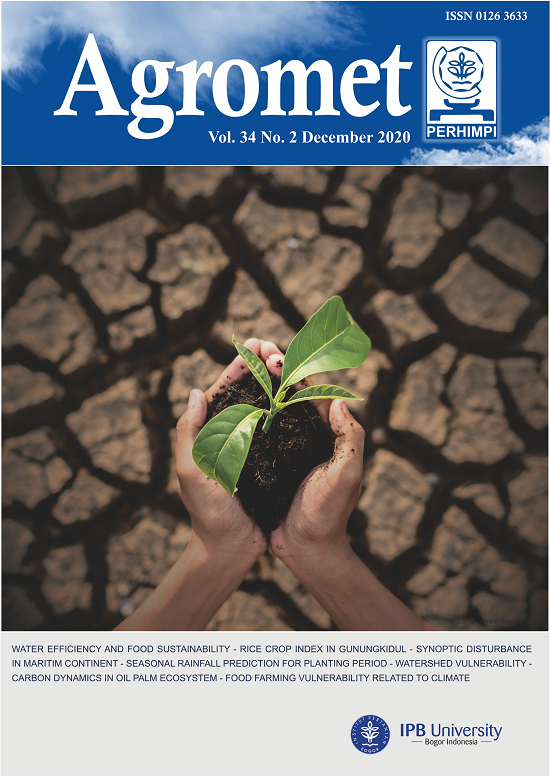The Use of Dam Environmental Vulnerability Index (DEVI) for Assessing Vulnerability of Bengawan Solo Watershed, Indonesia
Abstract
Bengawan Solo is the longest river in Java, but current conditions show that its watershed is in a critical condition. Deforestation was very intensive in the last three decades that contributed to degradation of the watershed. Other factor contributing to the degradation is dam construction. However, our knowledge on the impact of dam construction on the environment and its vulnerability is poorly understood. Here, we assessed vulnerability of the watershed based on physical properties such as existing dams, morpho-dynamic activities, and deforested area. The study aims to identify the vulnerability of the Bengawan Solo watershed based on dam environmental vulnerability index (DEVI) approach, and to analyse the dominant variable contributing to DEVI. For calculating DEVI, several data were needed including land cover, rainfall, stream water stage, soil type, stream network, and dams. The results showed that Bengawan Solo watershed had moderate to high vulnerability (60%). Moderate level was identified for Madiun and Wonogiri sub-watershed, while high level was in Cepu and Babat sub-watershed. Our findings revealed that morpho-dynamic activities as represented by sediment rate and stream water stage had contributed to the high DEVI value as in Cepu and Babat sub-watershed. Further, influence of dams in this research was not dominant implying that any improvement to the DEVI approach remains research challenges. The improvement of the approach is expected to better identify the impact of dam construction on environment, situated in other regions than Amazon, where it was firstly developed.
Authors

This work is licensed under a Creative Commons Attribution-NonCommercial 4.0 International License.

